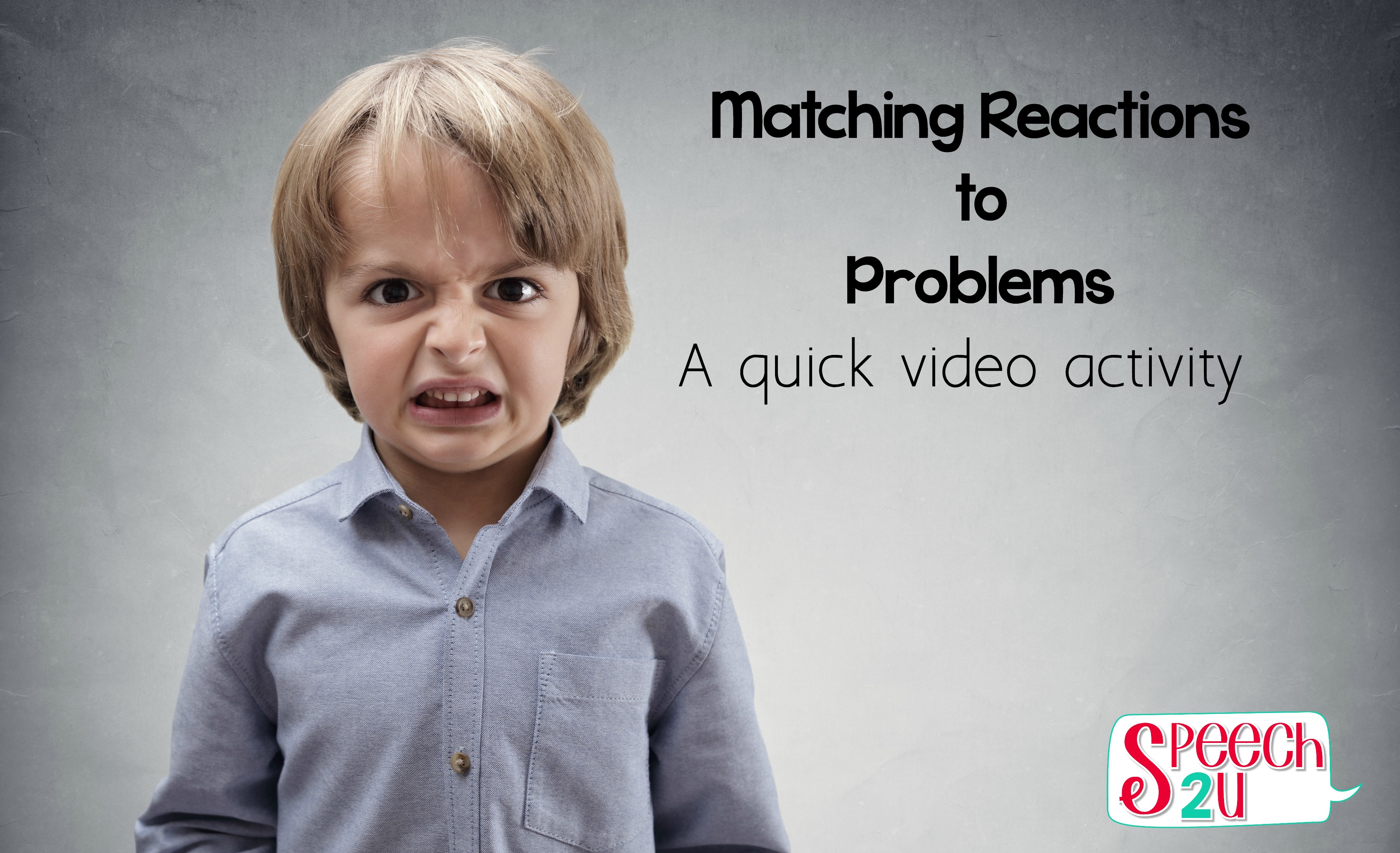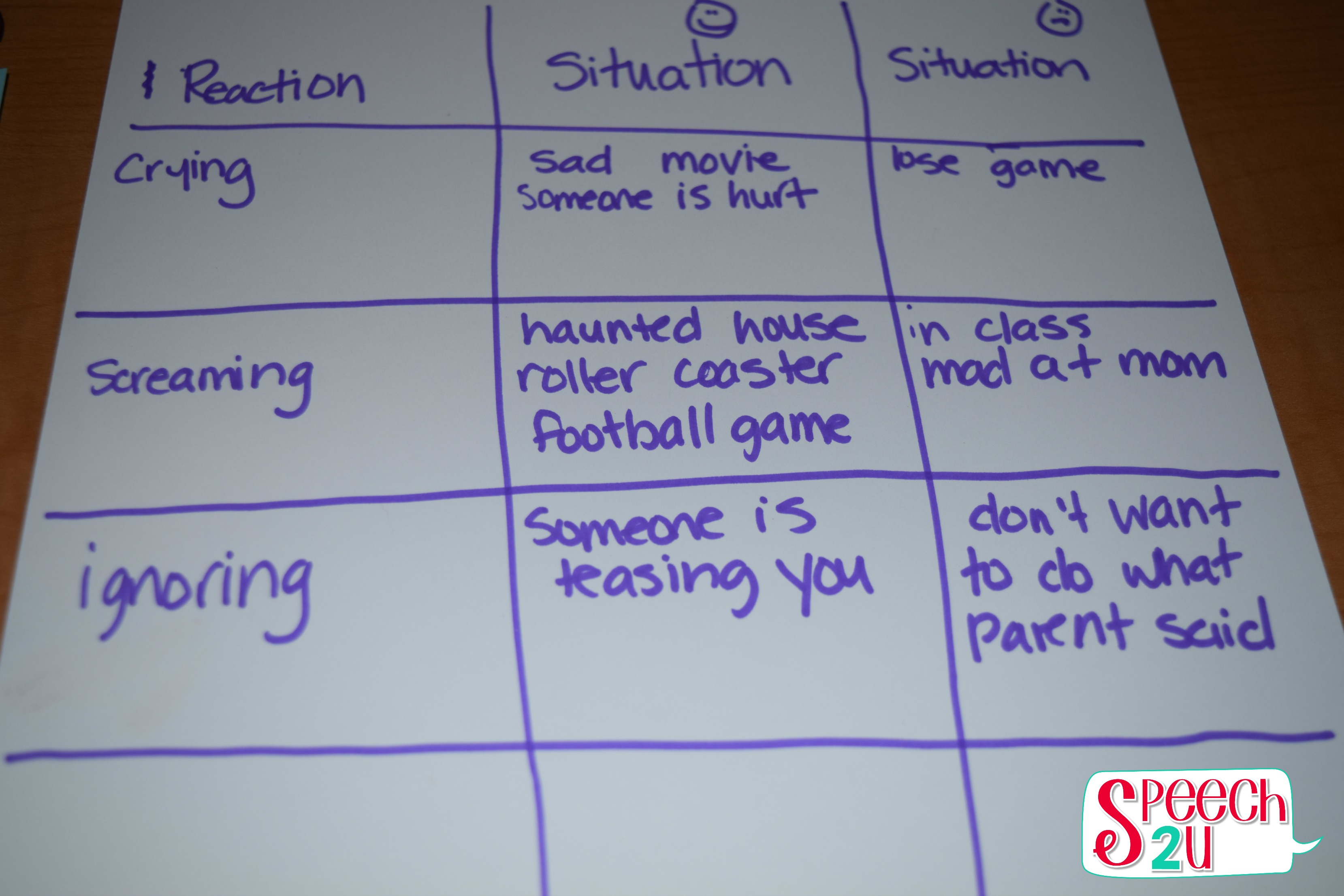Have you ever had a student who had BIG reactions to problems? Maybe when they didn’t get to be the blue marker, they would get upset and hide under the table. I’m always looking for different activities to work on reaction size and emotional vocabulary and wanted to share a fun activity we did in my speech room last week.

My husband and I love Jimmy Kimmel’s Halloween and Christmas parent pranks. When my son was about three, he wrapped up a shoe and gave it to him for Christmas. My son, just kind of laughed and gave it back after saying, “it’s a shoe.” My stomach hurt from laughing so hard. You can check out how I use that video in therapy: HERE.
This year, I used Jimmy Kimmel’s “I ate my child’s Halloween candy” video to work on understanding how the size of the reaction matches the size of the problem. There are two versions of this video-I think the first is a little bit more funny for me-but I used the Part 2 video as there is some bleeped out swearing in the first video.
Here’s how I used it in therapy. We’ve already discussed big, medium, and small problems in therapy. We started by reviewing the definitions of these problems. I placed large sticky notes on the wall for each problem. Then we generated different reactions to problems.
Reactions to the Size of the Problem
These were the reactions we chose:
- Taking deep breaths
- Crying
- Screaming/shouting
- Ignoring
- Asking questions/getting more information
- Breaking things/property damage
- Whining
- Saying ‘That’s not a big deal.”
- Talking to a parent
- Talking to a friend
- Hitting/kicking
When we were identifying reactions, I used a chart to help them understand that some reactions are appropriate in different situations. For example, screaming and shouting is generally considered an ineffective behavior-UNLESS you are on a roller coaster or in a haunted house. We could also compare the size of the problem to the reaction.

You could take this a step further by having the child also talk about what emotions are attached to each reaction AND have them identify what that would look like. For example, if the reaction is screaming-the emotion may be mad, scared or really excited (your football team scores a touchdown). We need to think about the situation to identify what the actual emotion is.
Finally, we watched the Jimmy Kimmel video. During the video, I encouraged my clients to identify and name the different reactions. We talked about the strategies that they were using to deal with difficulty information.
I think videos are a great way to strengthen comprehension and love to use them in therapy.
QUESTION: Do you have a favorite video that you use in therapy? I’d love it if you’d share it in the comments!


Thanks – great blog. A great idea to use the Jimmy Kimmel videos – perfect way to illustrate and discuss. Thank you .
Thank you!
Great tips! I have a student this is perfect for!
I’ve used videos for inferencing. My favorite so far is Defective Detective. A 4th grader & I had a great time with that one!